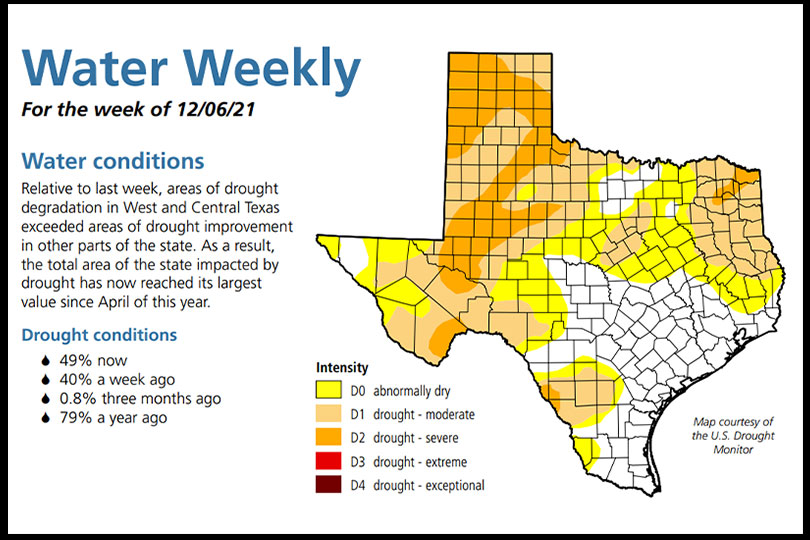By Jennifer Whitlock
Field Editor
Although most Texans had an exceptionally wet 2020 and great precipitation throughout the 2021 growing season, conditions have dried out significantly over the past several months.
And it looks like more of the same is in store for December, according to National Weather Service Dallas-Fort Worth Meteorologist-in-Charge Tom Bradshaw.
Soil moisture levels are declining, and it doesn’t look like conditions will improve before planting begins in 2022, Bradshaw said in an interview with the Texas Farm Bureau Radio Network.
“Unfortunately, we’re starting to sound like a broken record. We’ve been talking about warmer and drier conditions across the Lone Star State for the past several months,” Bradshaw said. “And it looks like December is going to hold true to form as another month where we’re going to see warmer than normal conditions and also much drier than normal across pretty much the entire state.”
The High Plains, West Texas and East Texas are in stages of drought ranging from abnormally dry to extreme, data from the Texas Water Development Board’s Water Weekly report shows. The report shows the total area of the state impacted by drought has now reached its largest value since April of this year.
“Parts of the Panhandle and West Texas, as well as parts of Northeast and East-Central Texas, are really starting to take it on the chin moisture-wise,” Bradshaw said. “We’re seeing moderate to severe drought across many counties in those parts of the state.”
For the remainder of the year, he expects to see some rain but probably much less than normal for the month of December. Some snow in the Panhandle and parts of West Texas or even North Texas is likely.
But with the much warmer temperatures predicted for the next several weeks, Bradshaw said significant rainfall chances are not likely.
That’s due to a La Niña weather pattern, which has been predicted for the winter.
The La Niña pattern is expected by the National Weather Service to continue through March 2022, with forecaster consensus anticipating it to remain in place through April-June before finally dissipating.

